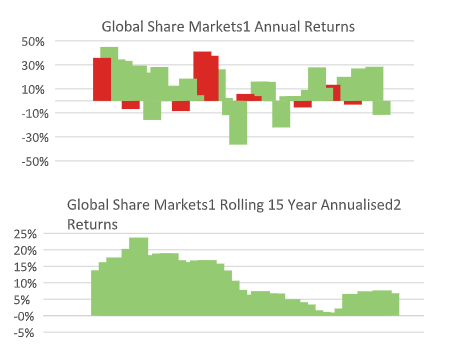
Market Update
Global share markets got off to a strong start to the year, rising 6.5% in local currency terms. Investors were encouraged by a sixth consecutive monthly fall in US year-on-year inflation in December. At 6.5%, US inflation is still above target but is down meaningfully from its peak of 9.1% in June.
Encouraging news on inflation led investors to expect fewer interest rate hikes from central banks going forward. This supported the returns of bond markets. Global and New Zealand bond markets rose around 2% – quite decent returns when it comes to bond investments. These returns provided some reprieve for bond investors after higher interest rates have weighed on bond returns throughout much of 2022.
The New Zealand share market delivered a solid 4.3% gain in January. Our local market was boosted by a positive outlook update from our largest listed company – Fisher & Paykel Healthcare. The company highlighted increased demand for its respiratory products as China shifts away from its zero
2022: A Matter of Perspective
2022 threw up a number of challenges for financial markets, including increased inflation, rising interest rates and slowing economic growth. In the end, both the New Zealand share market and the broader global share market saw declines of about 12% (in NZD terms). While these declines can be unnerving for investors, it is important to view them in the context of the sharemarket’s longer-term performance. For example, over the last 40 years, there were only five full calendar years where global shares recorded double- digit declines, with 2022 being one of them. However, if we look at the longer-term 15-year rolling performance of global shares over this period, it was positive in all years.
Beware of recency bias
While investing is a long-term game, it is common for investors to let short-term performance influence their decisions. They often base their expectations of future returns on the most recent performance of the market – a phenomenon known as recency bias. Recency bias can lead investors to sell their investments during periods of volatility, which can often be very detrimental to their long-term returns. In fact, for most investors who are regularly adding to their portfolio, volatile periods can provide an opportunity to improve performance compared to when markets simply deliver smooth gains. This is typically known as “dollar cost averaging”.
How does dollar cost averaging work?
Dollar cost averaging means making consistent, regular contributions to your investment portfolio (for example, making regular contributions to your KiwiSaver) rather than just making a one-time lump-sum investment. This disciplined approach helps smooth the prices that you invest at and reduces the risk of purchasing at unfavourable prices. Dollar cost averaging also lowers the average cost of investments during periods of volatility. By consistently purchasing shares, whether the market is up or down, you end up buying more shares for the same dollar investment when prices are low and fewer shares when prices are high, similar to purchasing items when they are on sale. In conclusion, the occasional year of double-digit declines is normal in financial markets and is part of the path to long-term returns. However, it is easy to let recency bias affect your investment decisions, so sticking to a well-chosen plan that suits your financial goals is particularly important during periods of volatility. Dollar cost averaging through regular contributions is one strategy that can help you make the most of the volatility and avoid emotionally driven decisions.
The Booster KiwiSaver Scheme, Booster Investment Scheme and Booster SuperScheme are issued and managed by Booster Investment Management Ltd. For a copy of the Scheme product disclosure statements, go to www.booster.co.nz

